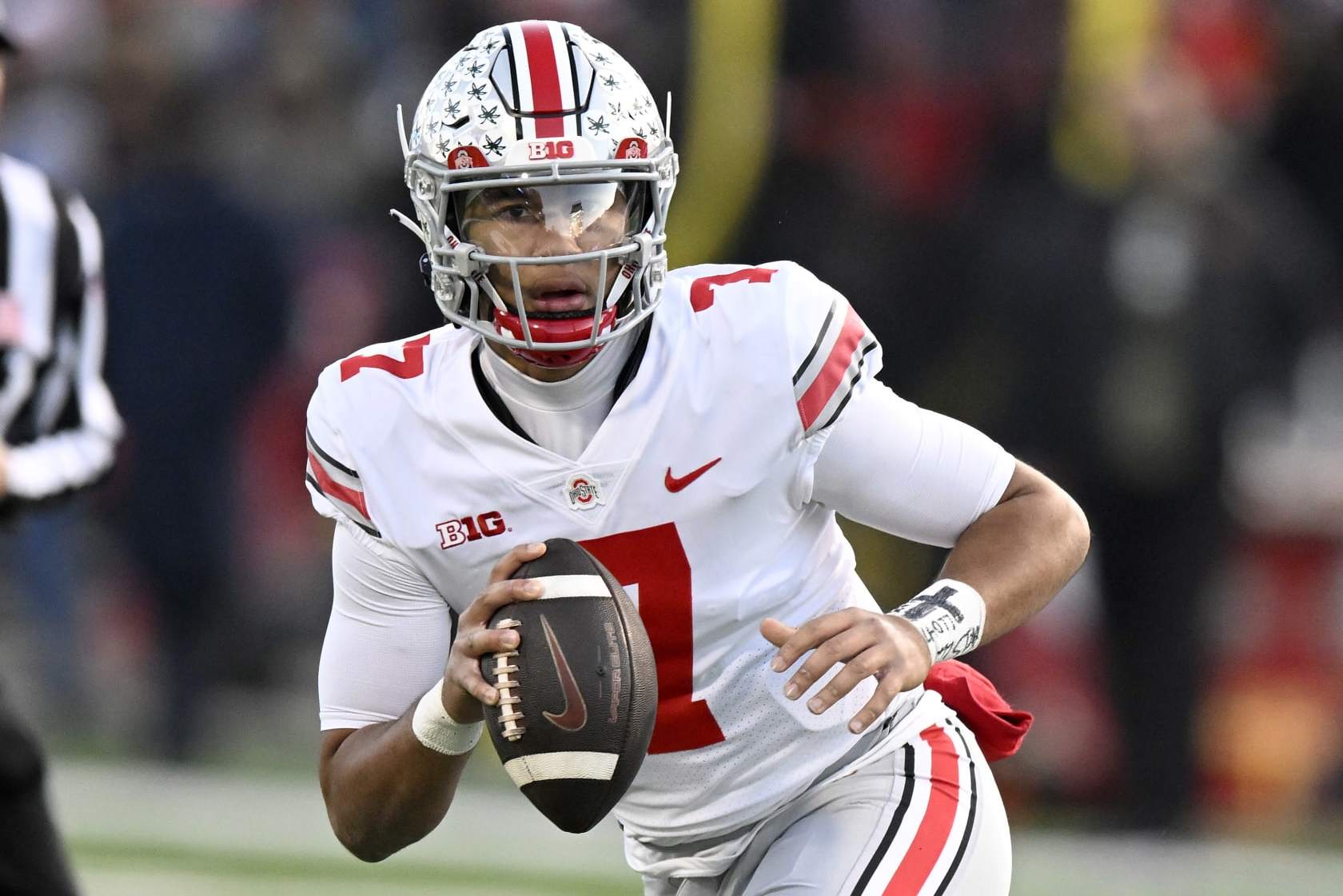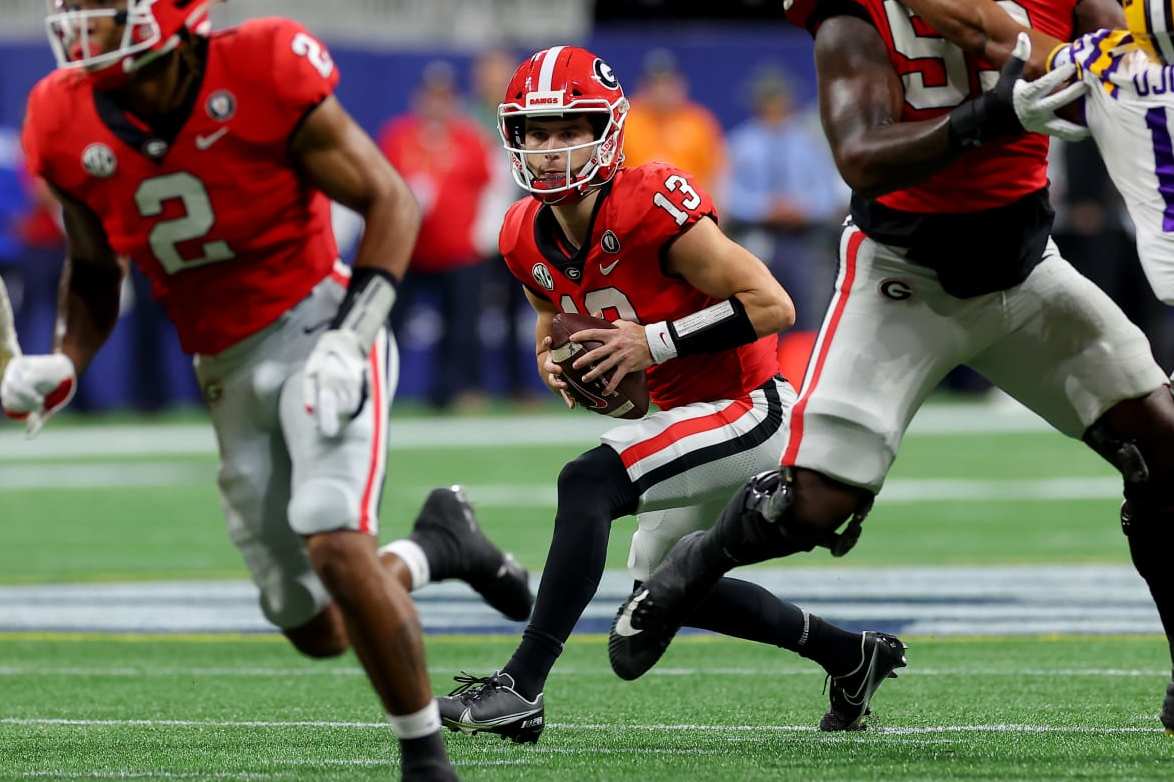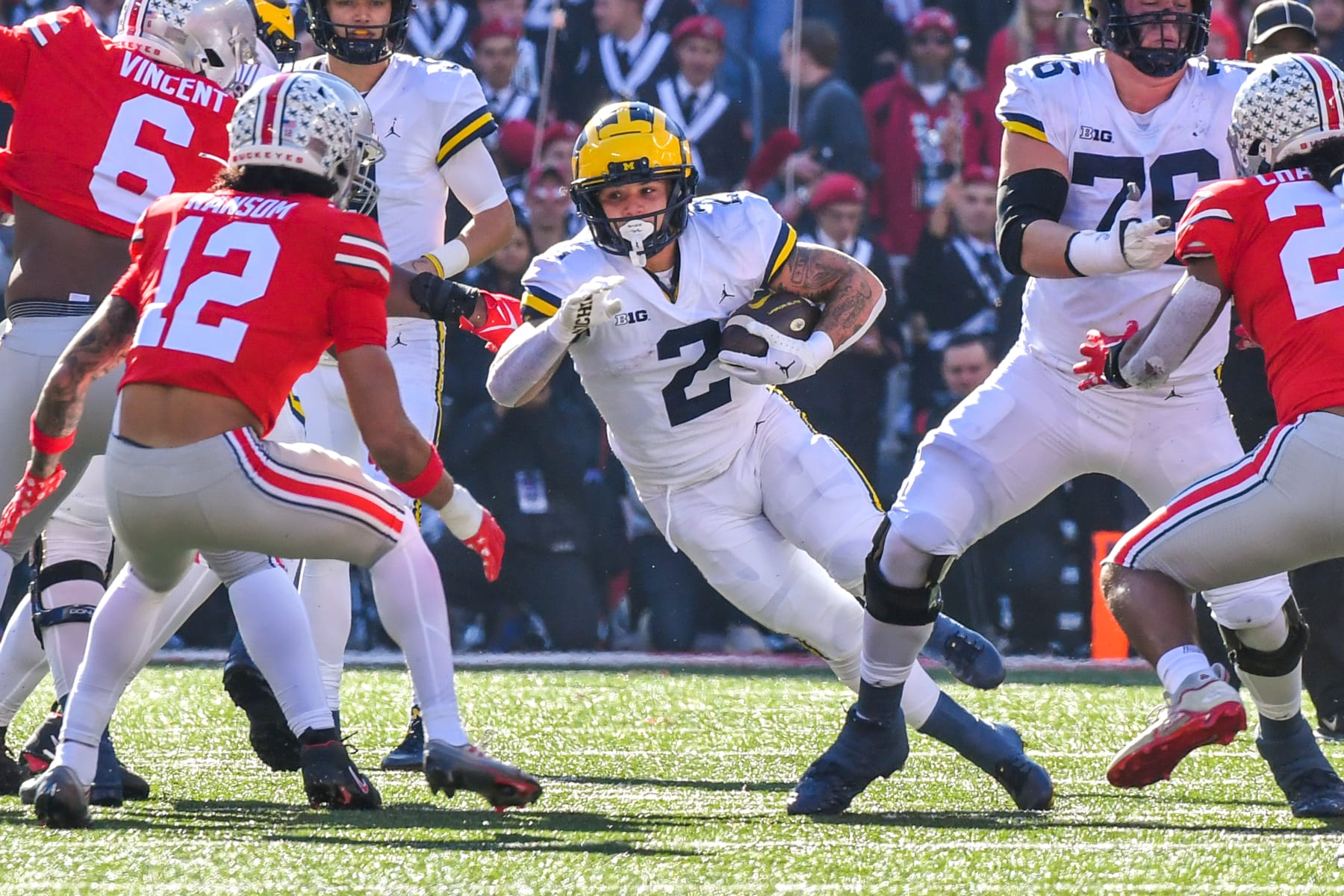Ranking the 2022 Heisman Trophy Candidates Based on Their NFL Potential
Ranking the 2022 Heisman Trophy Candidates Based on Their NFL Potential

Winners of the Heisman Trophy aren't guaranteed successful NFL careers. They aren't even guaranteed to be high draft picks, although that's become more common in recent years.
Just this week, the Carolina Panthers released quarterback Baker Mayfield, who won the Heisman in 2017. Mayfield is now with his third team (the Los Angeles Rams) in six months.
A quartet of quarterbacks—Georgia's Stetson Bennett, Ohio State's C.J. Stroud, TCU's Max Duggan and USC's Caleb Williams—are the finalists for this year's Heisman. Two of them could be No. 1 overall picks in the near future, while the other two might be late-round options at best.
We've also included Tennessee quarterback Hendon Hooker and running back Blake Corum here since both could have been Heisman finalists if not for their respective late-season injuries.
Traits are more important than outcome when it comes to evaluations. How a player's skill set projects to translate to the NFL determines his draft status, since hardware doesn't travel from one level to the next.
No matter who wins the Heisman on Saturday, this group of incoming NFL talent features everything from a franchise centerpiece to a late-round flyer on a successful collegian.
6. QB Stetson Bennett, Georgia

Should the Heisman be given to the nation's best overall player regardless of his team's record, or should it be handed to the best player on the best team?
As of late, it has largely gone to the former, though those winners tended to be on great teams and primarily played quarterback. However, the latter once gave us the likes of Chris Weinke and Jason White instead of LaDainian Tomlinson or Larry Fitzgerald.
Stetson Bennett is the quarterback of the reigning national champion Georgia Bulldogs, this year's No. 1 overall seed in the College Football Playoff. He's been a steadying presence behind center, but he's nowhere near the best player on his own team, let alone all of college football.
From an NFL perspective, Bennett is a marginal talent at best. He's a 5'11", 190-pound former walk-on who doesn't have the natural athleticism, arm talent or elite efficiency to offset his lack of size in the pros.
Bennett will be able to walk with his head held high in the state of Georgia for the rest of his days. His ability to do anything more upon reaching the NFL is severely limited, though.
The Burlsworth Trophy winner maximized his time on campus and should be very proud of what he accomplished, regardless of what's next for him.
5. QB Max Duggan, TCU

Maybe it's the fact he played at TCU or the reddish hair, but Max Duggan's rise with the Horned Frogs is reminiscent of what Andy Dalton once accomplished.
Like Duggan, Dalton once led TCU to an undefeated regular season and a berth to one of the major bowl games. But Duggan has thrown for more yards and touchdowns with fewer interceptions with a comparable average yards per attempt and QB rating than Dalton at any point during his collegiate career.
The comparison really comes down how the two physically play the position. Both are 6'2" and weigh 210 to 215 pounds. Neither has explosive arm talent, which makes downfield passing or attempts outside the hashes erratic at times, yet they both have functional mobility when asked to create as part of the designed run game or outside structure.
Dalton spent nine seasons at the helm of the Cincinnati Bengals offense, but he limited the scheme as much as he helped. However, there's value in a quarterback who can come in and be a quality backup and spot starter.
NFL coaches will want Duggan's attitude and leadership in their locker room after seeing his emotional outpouring following TCU's loss to Kansas State in the Big 12 Championship Game. The reigning Big 12 Offensive Player of the Year may not be an elite quarterback prospect, but he has a place in the NFL.
4. RB Blake Corum, Michigan

Michigan running back Blake Corum suffered a season-ending knee injury during the Wolverines' penultimate regular-season contest against Illinois. He tried to gut his way through the rest of that contest and the following week's meeting with the Ohio State Buckeyes to no avail.
The Big Ten Running Back of the Year ultimately required surgery, according to ESPN's Tom VanHaaren.
Prior to going down, Corum shredded opponents left and right. Even though he missed almost all of Michigan's past two games, he still ranks eighth nationally with 1,463 rushing yards and is tied for fourth with 18 rushing touchdowns. He's a slasher with excellent balance and strength in his lower body.
However, the knee injury hurts Corum's draft standing on a few levels.
His small stature (5'8", 210 lbs) is already a concern, and his not holding up to the rigors of an entire season only feeds into that perception. His absence hasn't slowed Michigan's running game, either. In fact, sophomore Donovan Edwards posted 401 rushing yards and three touchdowns in his absence over the past two games.
Corum is a fantastic collegiate running back, but he won't be perceived as a workhorse in the NFL. He'll likely be drafted somewhere in the middle rounds to serve as a complementary option in a rotation.
3. QB Hendon Hooker, Tennessee

Hendon Hooker deserves a ton of credit for helping to elevate the Tennessee Volunteers back into the national consciousness.
Tennessee looked like a potential College Football Playoff selection until its surprising loss to South Carolina in mid-November. Hooker suffered a torn ACL during that game, which brought his Heisman candidacy to a screeching halt.
Hooker could fall into the later rounds since he might spend most of his rookie season recovering from his ACL tear. However, he was considered a legitimate NFL prospect prior to his injury.
Hooker has prototypical size (6'4", 218 lbs), above-average athleticism (430 rushing yards) and a penchant for big-time throws. In fact, Hooker remains tied for the FBS lead with 9.5 yards per pass attempt.
His ability to push the ball down the field and layer throws is also a detriment, though. Tennessee's offense is rooted in concepts from Baylor's scheme during Art Briles' tenure, which is difficult to defend but doesn't provide many examples of NFL-caliber throws.
Hooker also turns 25 in January. That means he's an older prospect with a recent major injury and questions about how his skill set will translate to the NFL. That isn't an ideal mix, although teams tend to be willing to take chances on talented quarterbacks to see if they can be properly developed.
2. QB C.J. Stroud, Ohio State

Ohio State quarterback C.J. Stroud should be a lock to hear his name called during the top 10 picks of the 2023 NFL draft. Even so, this season has been somewhat of a disappointment.
Although the Buckeyes backed their way into the College Football Playoff, they did so after being stomped by the rival Michigan Wolverines in Columbus. Slight concerns about Stroud have turned into major ones.
When the two-time Big Ten Offensive Player of the Year is working in rhythm and executing the offense, he's as dangerous as they come. Stroud is a smooth and efficient operator capable of making fantastic, pinpoint throws down the field.
Quarterbacks who competently and consistently work within the scheme shouldn't be viewed as a negative. The definition of the position is to be a distributor and execute the plays called by the coaching staff. However, the evolution of the position demands more, particularly at the NFL level.
While proper execution remains at the forefront, an ability to create and work outside of structure is more important than ever. Pockets are hardly ever clean. Defenders are almost always swarming around quarterbacks. Poise, pocket feel and creativity are now essentials.
Stroud tends to struggle when he's asked to work off-platform. Despite his obvious athletic traits, he rarely ever creates with his legs. Quarterbacks don't necessarily need to be amazing athletes to create scrambling yardage. But the extension of plays, which allows receivers down the field to get open, can be back-breaking for opposing defenses.
Alabama quarterback Bryce Young—last season's Heisman Trophy winner—is more natural playing the position. Stroud brings more prototypical traits. Both should be off the board very quickly once April's draft begins.
1. QB Caleb Williams, USC

USC's Caleb Williams is a true sophomore and not eligible for the 2023 NFL draft class. But the overwhelming favorite to claim this year's Heisman Trophy is the most talented prospect among the group in New York City and the front-runner to be the No. 1 overall pick in 2024.
All eyes will be on the USC quarterback for the next 16 months before he finally hears his name called by NFL Commissioner Roger Goodell. Someone might as well trademark the slogans "Cave for Caleb" or "Losing the On-Field War for 2024."
It's easy to fall into the trap of thinking next year's prospects will be more desirable than this year's, but in this particular case, it's true. Williams and North Carolina's Drake Maye are better than the quarterbacks who will be selected toward the top of the 2023 draft.
Williams has been under the microscope before he even stepped onto a campus. He joined the Oklahoma Sooners program as a 5-star recruit. He displaced an early Heisman favorite last year in Spencer Rattler, but he experienced some struggles as part of Lincoln Riley's offense. Williams dazzled as a true freshman with a 21-to-4 touchdown-to-interception ratio in 11 appearances. He's been even better after following Riley to the Trojans.
The reigning Pac-12 Offensive Player of the Year threw for 4,075 yards and ran for 372 more. His 47 total touchdowns led major college football. He didn't even throw a single interception when facing pressure this season, according to Pro Football Focus.
The creativity with which Williams plays is what makes him truly special.
Take away the Pac-12 Championship Game, where he battled through a tweaked hamstring, and shades of Patrick Mahomes appear. The 6'1", 215-pound signal-caller has a tremendous feel for pressure, with the accompanying movement and various arm angles to make magic happen when plays break down. His natural throwing ability and feel for the game are everything NFL teams want in a modern quarterback.
